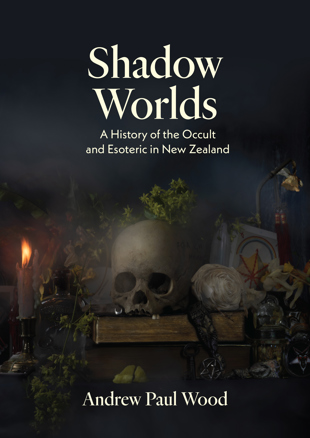Jenny Nicholls has reviewed Andrew Paul Wood’s Shadow Worlds: A history of the occult and esoteric in New Zealand in the Waiheke Weekender:
‘A wonderfully gossipy, deeply researched history of occultism in New Zealand, filled with outrageous personalities, con artists, devil-worshippers, New Agers, witches, neo-pagans, the new alt-right, Spiritualist photographers, mystics, mediums and necromancers, with diversions into the lives of foreign influencers like the “pioneering ceremonial magician” Aleister Crowley (1875–1947) and the founder of the Theosophical Society, owlish Russian émigré Madame Helena Blavatsky (1831–1891). If you want to know more about the Smaragdum Thalasses Temple of the Stella Matutina order in Havelock North, the Hermetic Order of the Golden Dawn, the Society of the Blue Veil, early New Zealand anthroposophists or the United Ancient Order of Druids, you have come to the right place.
Andrew Paul Wood is a widely published South Island arts writer and the art editor for takahē. After a frighteningly erudite introduction, his book becomes less a dry academic text and more a parade of hair-raising yarns and scandalous newspaper stories. This is, of course, good. The big names include James K Baxter, Edmund Hillary and Katherine Mansfield, all, in their own ways, in hot pursuit of ‘higher truths’.
Architecture fans will be interested to learn that many of New Zealand’s most arresting buildings were paid for by the wealthy, well-connected patrons of Theosophical societies, or magical orders like Stella Matutina, whose temple in Havelock North, Whare Rā, was designed by a senior member of the order: the celebrated architect James Chapman-Taylor, who specialised in a style Wood calls ‘Jaco-Tudorbethan’.
The design format of the book is also interesting. I liked the full-page portraits, with captions treated like pull quotes. This is a book filled not only with the engaging personality of the author but also a parade of outrageous mystic personalities, and this ‘portrait gallery’ approach works well. The book’s cover features an intriguing photograph by the brilliant artist Fiona Pardington although, sadly, the tonal subtleties of her image proved too much for the book’s printer.’


